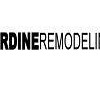
Crawlspace waterproofing tends to follow the same rules as basement waterproofing. The only difference is that you normally can't stand upright in a crawlspace as you could in a full depth basement. The walls can leak and a water table can still cause hydrostatic pressure. Some crawlspaces have poured concrete floors and some are left with dirt or gravel. Since most crawlspaces are ignored to a certain degree, it likely that this area is the unhealthiest area in the home. Crawlspace encapsulations are a cost effective way to create a healthier environment for a home.
Foundation cracks may be injected with materials to deal with the leaks. These injections are meant to fill the crack through the thickness of the concrete from the bottom of the foundation to the top. When a crack repair has been properly executed, there will be no more water that will come through that particular crack. It is often argued which material should be used, epoxy or polyurethane for a crack repair. The truth is it depends on the type of repair you are trying to achieve. Both epoxy and polyurethane have qualities that fit different repair needs.
Picture yourself working as part of a team, within a supportive family atmosphere. Family Waterproofing Solutions seeks to hire an experienced, self-motivated individual to join our Sales team. The Sales Executive will be responsible for re-generating and expanding business, ultimately contributing creatively to the growth of our company. This position is geared towards a qualified assessor; a highly organized scheduler with a natural ability to thrive in repetition (and telephone dialing!). You are a thoughtful listener who closes the sale.
The foundation walls and floor of your basement are built to support your house and to keep out the moisture that surrounds them. Their purpose is to keep your home dry and create a stable structure for you and your family. No matter how beautiful your home may be, it will only ever be as strong as its foundation and footings below. There are a number of issues that may occur with foundations, from water seeping in through cracks to walls bowing or crumbling. While every home is unique, they often experience problems that are actually very common.
Crawlspaces are typically vented to remove moisture through evaporation-groundwater, rainwater, and condensate enter the crawlspace and, under the right conditions, eventually dry and waft out the vents. It's a fairly effective way to deal with a part of the house that is prone to dampness. Whether you know it or not, crawlspaces are found under many different types of homes. Crawlspaces are especially common in rambler and split-level style homes, in historical properties, and under additions for sunrooms, kitchen expansions, and other home expansions.
You may not know it, butyoursump pumpcould be the difference between a dry and wet basement or crawl space when heavy rains hit. The foundation walls and floor of your basement are built to support your house and to keep out the moisture that surrounds them. Their purpose is to keep your home dry and create a stable structure for you and your family. Window wells provide access to your basement windows and give the outside of your house a finished appearance. If you don't put window well covers over the openings, debris collects in them.
Similar Businesses

